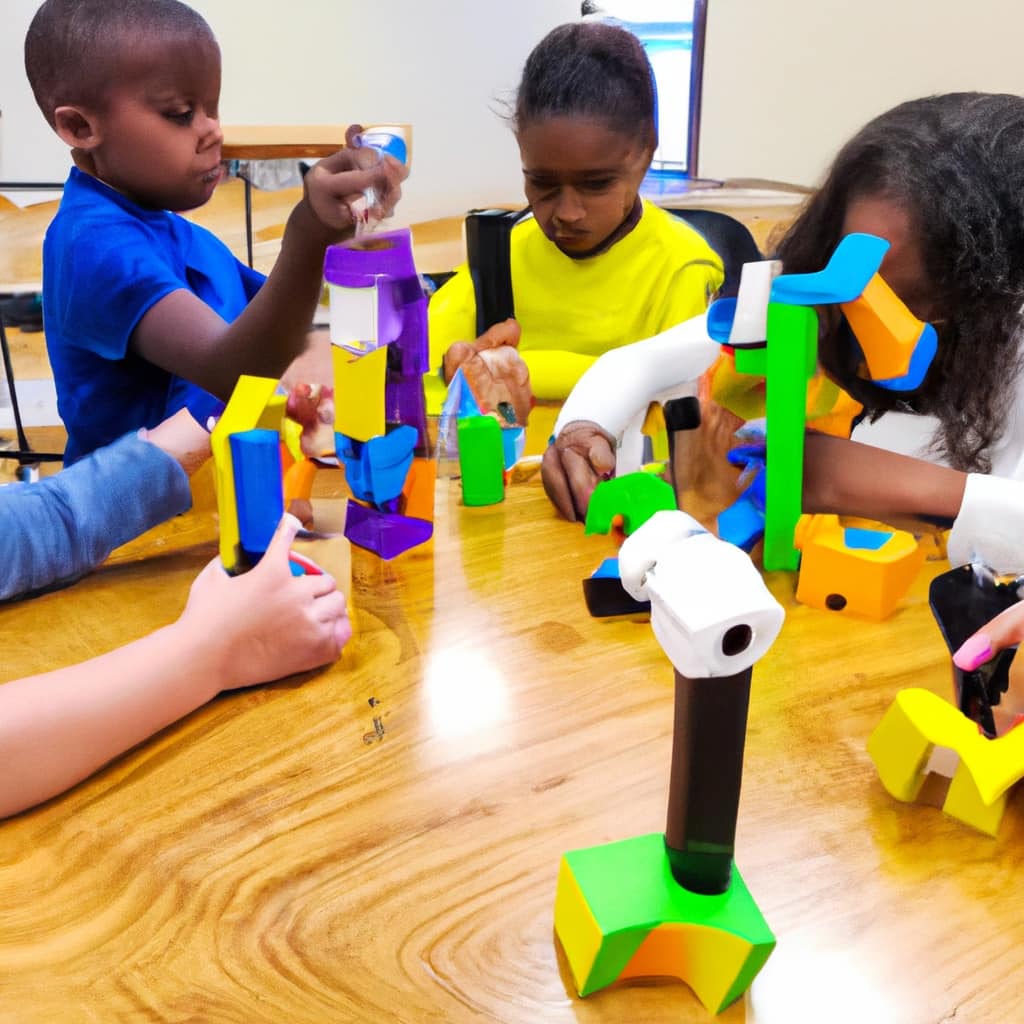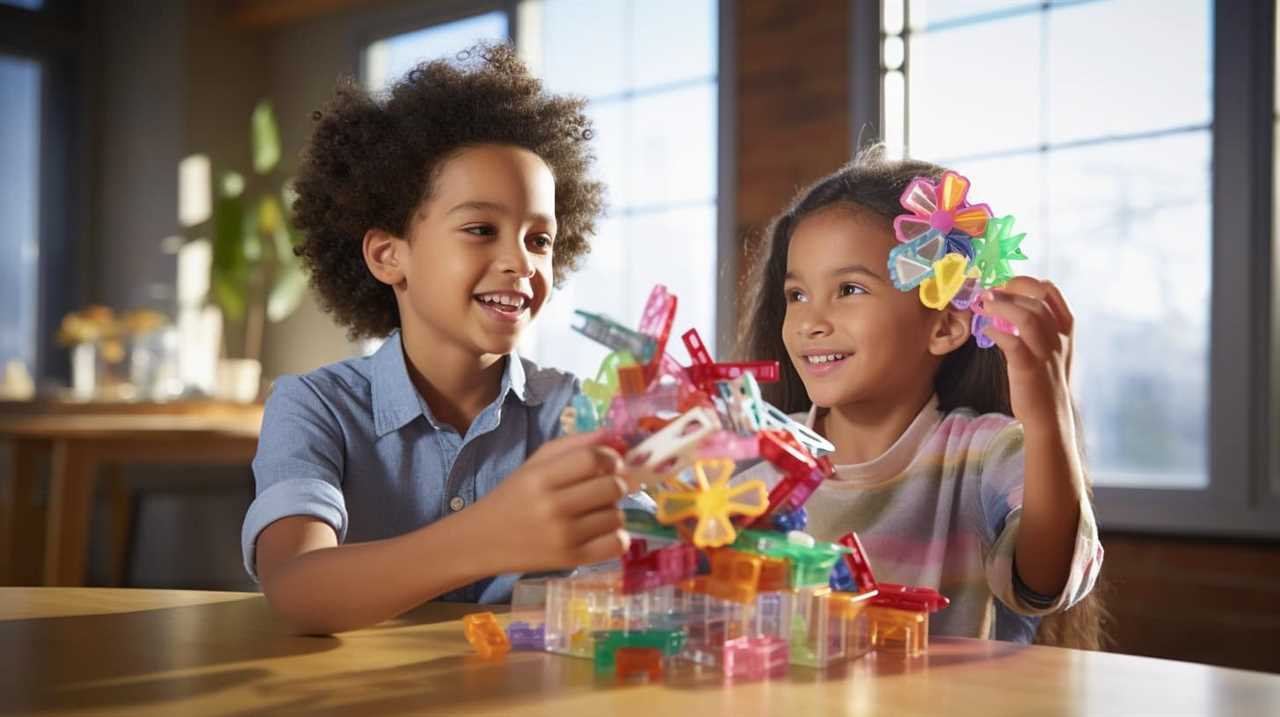As an educator of young children, I see babies as tiny sponges, ready to soak up everything in their environment. Like a seed reaching for the sun, their thirst for knowledge knows no bounds.
That’s why introducing STEM to infants is like giving them a spark that will ignite a lifelong love for learning. By engaging babies in simple yet stimulating activities, we can nurture their problem-solving skills and cultivate their natural sense of wonder.
In this article, we’ll explore the importance of early STEM exposure and share innovative ways to spark curiosity in our littlest learners.
Key Takeaways
- Early exposure to STEM concepts lays a strong foundation for future learning.
- STEM exposure fosters critical thinking skills and enhances problem-solving abilities.
- Sensory experiences promote cognitive, physical, and social-emotional development in infants.
- Providing toys and activities that promote problem-solving nurtures infants’ development.
The Importance of Early STEM Exposure
I believe that early exposure to STEM concepts is crucial for laying a strong foundation for future learning and nurturing infants’ curiosity and problem-solving skills.
The benefits of early STEM exposure for infants are immense. By exploring STEM concepts through sensory play, babies are able to engage their senses and develop a deeper understanding of the world around them.
Sensory play allows infants to explore different textures, colors, and sounds, stimulating their cognitive and physical development. It helps them to make connections, develop problem-solving skills, and foster creativity.
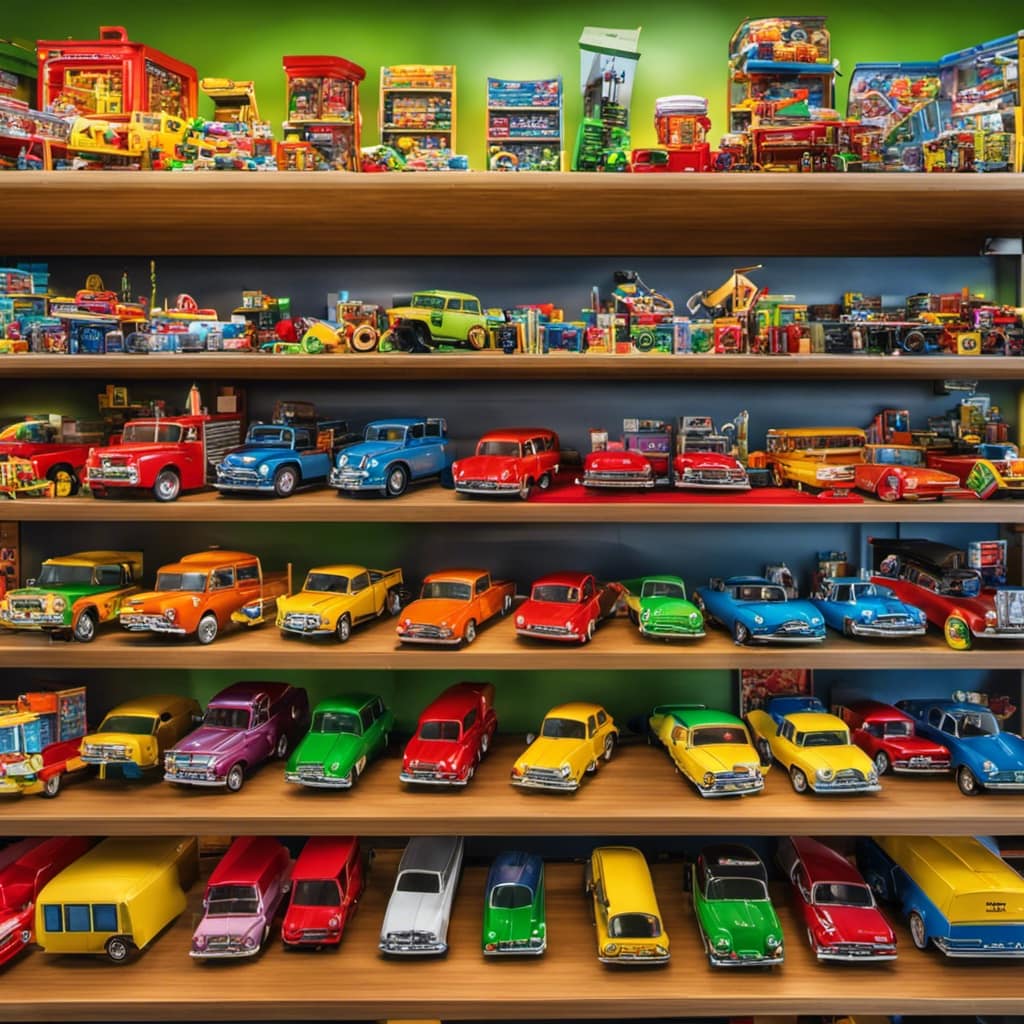
Through interactive toys and games, infants can further explore STEM concepts in a playful and engaging way. By introducing simple science experiments, infants can begin to develop a love for discovery and learn the basics of cause and effect.
Early exposure to STEM concepts through sensory play sets the stage for a lifelong passion for learning and problem-solving.
Creating a STEM-Friendly Home Environment
Creating a home environment that promotes exploration and hands-on learning ignites a passion for discovery in young children. Designated play areas and STEM-friendly materials are essential in creating a stimulating environment for infants.
By setting up specific areas in the home for play and learning, infants are encouraged to explore and engage with their surroundings. Incorporating STEM-friendly materials such as building blocks, puzzles, and sensory bins provides opportunities for hands-on learning and problem-solving. These materials not only foster cognitive development but also enhance fine motor skills.
Infants can experiment, build, and explore, developing their creativity and critical thinking abilities. A STEM-friendly home environment sets the stage for a lifelong love of learning and discovery, preparing infants for future success in STEM fields.
Engaging Infants in Sensory Experiences
Engaging babies in sensory experiences allows them to explore the world and learn through their senses. Sensory play benefits infants in numerous ways, stimulating their cognitive, physical, and social-emotional development.

Here are three reasons why sensory play is essential for infants:
-
Developmental Growth: Sensory toys for infants provide opportunities for them to interact with different textures, sounds, and smells, enhancing their sensory awareness and cognitive skills.
-
Emotional Regulation: Sensory play helps infants regulate their emotions by providing a safe space for exploration and self-expression. It allows them to release energy and reduce anxiety, promoting a sense of calmness and well-being.
-
Language Development: Engaging in sensory experiences with infants stimulates their language development. Through sensory play, babies learn to communicate their preferences, describe their experiences, and develop vocabulary.
Interactive Toys and Games for STEM Exploration
Using interactive toys and games has been a great way for me to introduce STEM concepts to my baby. The combination of STEM themed nursery decor and STEM inspired board books provides a stimulating environment for learning. The table below showcases some examples of interactive toys and games that have sparked curiosity and fostered problem-solving skills in my little one.
| Toys/Games | Description | Benefits |
|---|---|---|
| STEM Board Books | Playful introduction to basic concepts | Enhances cognitive development |
| Mobiles featuring planets and stars | Sparks curiosity and inspires learning | Encourages exploration and discovery |
| Wall decals depicting the solar system | Promotes visual engagement | Stimulates curiosity and imagination |
These interactive toys and engaging decor lay the foundation for a lifelong passion for STEM. They not only entertain, but also educate, making learning a fun and interactive experience for my baby.

Simple Science Experiments for Infants
I love conducting simple science experiments with my baby to introduce them to new concepts and encourage their natural sense of wonder. It’s amazing to see their eyes light up with curiosity and excitement as we explore the world together.
Here are three sensory play experiments and problem-solving toys that have been a hit with my little one:
-
Sensory bags with different textures: Filling a ziplock bag with various materials like rice, sand, and pom-poms creates a sensory wonderland for babies to touch and explore.
-
Sink or Float game: Using a tub of water and different objects, we learn about buoyancy and cause-and-effect as we guess which items will sink and which will float.
-
Stacking toys: Building towers with blocks or stacking rings not only helps develop fine motor skills but also encourages problem-solving as my baby figures out how to balance and stack the pieces.
These simple science experiments and problem-solving toys are not only fun but also lay the foundation for future STEM learning. It’s incredible to witness my baby’s growth and development as they engage in these hands-on activities.

Developing Problem-Solving Skills in Infants
My baby’s problem-solving skills have flourished as we explore hands-on activities together. One of the ways we have been fostering her development is through age-appropriate puzzles and sensory play.
These activities not only engage her senses but also encourage her to think critically and find solutions. When she engages with puzzles, she learns to analyze and manipulate shapes, enhancing her problem-solving abilities. The act of fitting the pieces together gives her a sense of accomplishment and boosts her confidence.
Sensory play, on the other hand, allows her to explore different textures, colors, and materials, stimulating her senses and promoting cognitive development.
Through these activities, my baby is not only having fun, but also developing important problem-solving skills that will benefit her in the future.
Enhancing Fine Motor Skills in Infants
In my previous subtopic, I discussed the importance of developing problem-solving skills in infants.
Now, let’s shift our focus to enhancing fine motor skills in these little learners.

Fine motor development refers to the coordination and control of small muscles in the hands and fingers. This skill is crucial for tasks such as writing, buttoning clothes, and using utensils. By promoting fine motor skills, we can also improve hand-eye coordination, which is the ability to coordinate the visual information with hand movements.
Here are three ways to enhance fine motor skills and hand-eye coordination in infants:
-
Offer toys and activities that require grasping and manipulating objects, such as stacking blocks or puzzles.
-
Engage in finger painting or playdough activities, which encourage the use of small hand movements.
-
Introduce activities that involve picking up small objects with tweezers or tongs.
Engineering Activities for Infants
One way to engage infants in engineering activities is by providing them with stacking blocks to build structures and improve their fine motor skills.
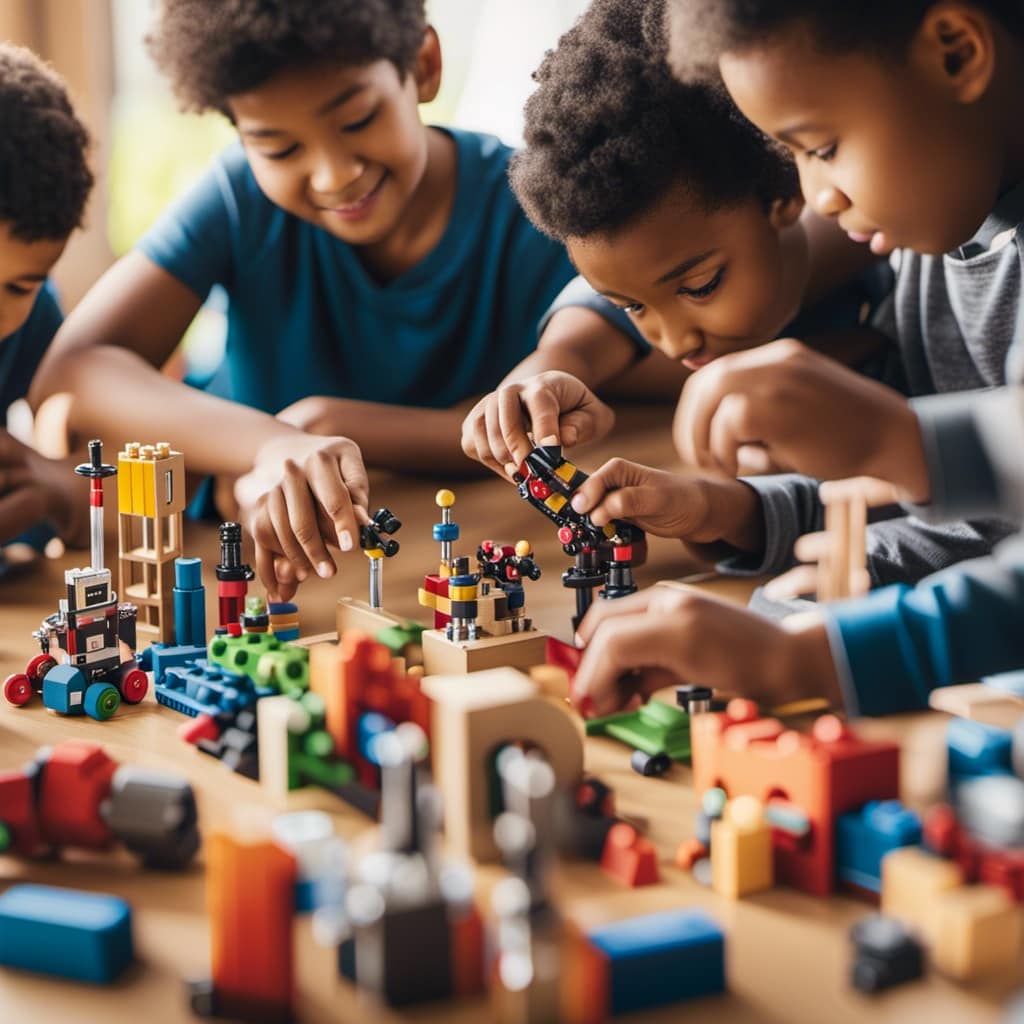
Engineering challenges can be introduced through hands-on exploration, allowing infants to experiment and problem-solve.
By encouraging infants to stack blocks and create structures, they develop their spatial awareness and hand-eye coordination. These activities also foster creativity and imagination as they explore different ways to build and balance.
Hands-on exploration in engineering activities helps infants develop problem-solving skills as they encounter challenges and find innovative solutions.
It is important to provide a safe and supportive environment where infants can freely explore and discover the principles of engineering.
Through these activities, infants not only improve their fine motor skills but also lay the foundation for a lifelong love of STEM.
Nurturing a Lifelong Love for STEM
After exploring the exciting world of engineering activities for infants, let’s shift our focus to nurturing a lifelong love for STEM. As a parent or caregiver, I believe that encouraging curiosity and fostering lifelong learning are essential for a child’s growth and development. Here are three ways we can accomplish this:
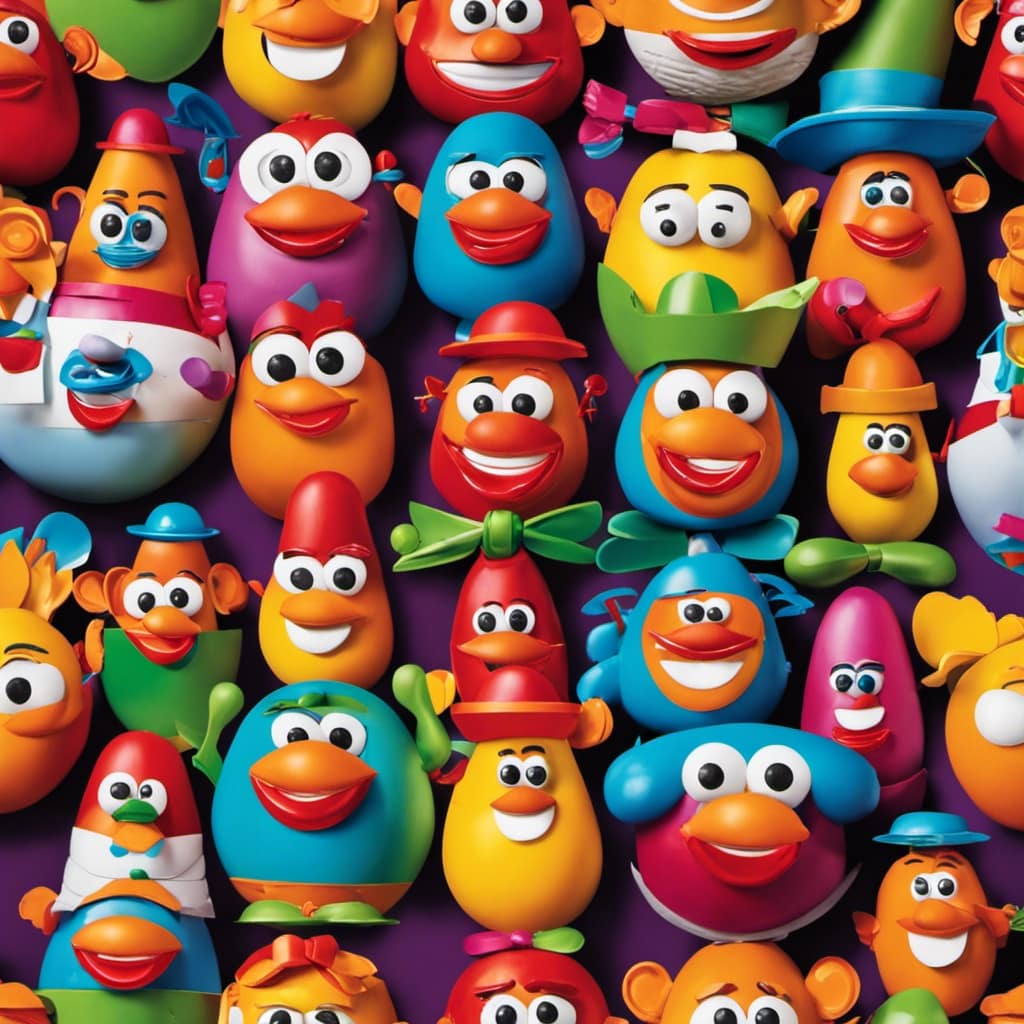
-
Embrace a growth mindset: By emphasizing the process of learning rather than just the outcome, we can instill a sense of curiosity and a love for exploration in infants. Encouraging them to ask questions and explore different ideas will foster a lifelong love for learning.
-
Provide diverse learning opportunities: Exposing infants to a variety of STEM activities, such as nature walks, science experiments, and sensory play, will ignite their curiosity and keep their love for learning alive. Offering a range of stimulating experiences will help them develop a well-rounded understanding of the world around them.
-
Be a role model: As adults, we can inspire infants by demonstrating our own curiosity and passion for learning. By engaging in STEM activities together, we show them that learning is a lifelong journey worth pursuing. Our enthusiasm and support will encourage their own love for STEM.
Frequently Asked Questions
How Can Sensory Play Support Infants’ Cognitive and Physical Development?
Sensory play supports infants’ cognitive and physical development by engaging their senses and promoting exploration. Through sensory exploration, infants develop important cognitive skills, such as problem-solving and sensory integration, while also enhancing their physical abilities and overall development.
What Are Some Examples of Interactive Toys That Can Encourage STEM Exploration in Infants?
Interactive toys like STEM-themed board books and mobiles featuring planets and stars can ignite infants’ curiosity and foster a love for STEM exploration. These engaging toys create a stimulating environment for early learning and inspire a passion for discovery.
How Can Simple Science Experiments Engage Infants’ Senses and Develop Problem-Solving Skills?
Simple science experiments engage infants’ senses and develop problem-solving skills. By incorporating sensory elements like textures and cause-and-effect interactions, infants can explore and learn about the world around them, fostering curiosity and enhancing their problem-solving abilities.

What Are Some Ways to Develop Problem-Solving Skills in Infants Through Fine Motor Activities?
To develop problem-solving skills in infants through fine motor activities, I recommend incorporating sensory exploration and puzzle play. These activities engage their senses, boost critical thinking, and enhance their fine motor skills.
How Can Engineering Activities Enhance Problem-Solving Skills and Foster Creativity in Infants?
Engineering activities for infants, like stacking blocks and building structures, enhance problem-solving skills and foster creativity. Through hands-on exploration, infants develop fine motor skills and are introduced to the world of STEM.
Conclusion
After exploring the importance of introducing STEM to infants and providing various ways to engage them in STEM activities, it becomes clear that nurturing their curiosity and problem-solving skills from an early age is crucial.
By creating a STEM-friendly home environment and engaging infants in sensory experiences, interactive toys, and simple science experiments, we can lay a strong foundation for their future learning.
Let us embark on this exciting journey of discovery with our little ones, as we watch them bloom into lifelong learners, fueled by their love for STEM and their insatiable curiosity for the world around them.


